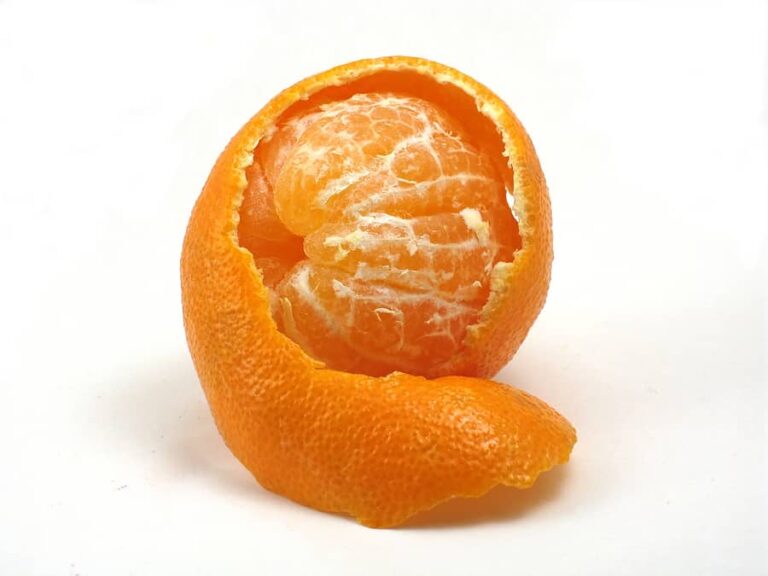Tangelos for Backyard Gardens
Tangelos are easy to grow in home and backyard gardens.
Tangelos are hybrids of mandarins and grapefruits. The name tangelo is short for “tang” tangerine (a popular name for mandarins) and “elo” from pummelo (once the name used for grapefruits, but in actuality a separate fruit).
Related articles:
- Ways to Serve Oranges
- Ways to Serve Mandarin Orange
- Ways to Serve Lemons
- Ways to Serve Grapefruit
- Ways to Use Limes

Tangelo fruits can vary in color and size but are commonly about the size of an orange. They generally have loose skin and are easier to peel than oranges. They are readily distinguished from oranges by a characteristic “nipple” at the stem end.
Tangelo’s flavor is tart and tangy; the fruit is aromatic; they can be juicy at the expense of flesh. Tangelos are sometimes referred to as “Honeybells”.
Tangelo is an evergreen citrus tree. A standard tangelo can grow 20 to 30 feet tall and 15 to 25 feet wide. Trees on dwarfing or semi-dwarfing rootstock will grow to one-fourth to one-third the size of a standard, that is 5 to 7 feet tall and wide. Tangelos are best adapted to hot climates.
Best climate for growing tangelos
- Tangelos grow best in USDA Zones 9 and 10.
- Tangelos are hardy to the mid-20sF. Protect plants from freezing temperatures to avoid dieback or death. Fruit must be protected from temperatures below freezing.
Where to plant tangelos
- Choose a location that gets at least 8 hours of sun or more each day. Set tangelos in a protected spot away from a prevailing breeze or wind. Avoid planting in low spots where cold air or frost can settle.
- Plant tangelos in compost-rich, loamy soil that is well-drained. Keep the soil evenly moist. Protect plants with plant blankets if temperatures near freezing are forecast.
Container growing tangelos
- Dwarf tangelos can be grown in containers. Choose a container at least 18 inches deep and wide. Move tangelos to larger containers after a year or two.
- Tangelos can be grown indoors in a very brightly lit spot. Potting soil should be coarse, acidic, and well-drained. Tangelos growing in containers in cold-winter regions should be moved indoors in autumn before the first frost.
Tangelo pollination
- Most tangelos are self-fertile. The popular tangelo ‘Minneola’ requires a pollinator to ensure a good fruit set. Most mandarins will pollinate tangelos with the exception of Satsumas, ‘Orlando’, and ‘Seminole’. You can help a tree set fruit by taking a small brush and moving pollen from one flower to another. Honeybees and other pollinators can assist as well. Trees will begin bearing fruit at 1 to 2 years old. A mature tree will bear 40 to 50 fruits. Fruits commonly ripen from winter into spring.
Feeding tangelos
- Feed tangelo trees in mid-spring, early summer, and late summer. Use an organic fertilizer formulated for citrus trees, generally higher in nitrogen than phosphorus and potassium.
Feeding tangelos
- Take care when harvesting fruit not to pull the fruit or the rind will tear around the stem; cutting stems with pruning shears is the best harvest practice.
Tangelo pests
- Tangelos, like other citrus, are usually not bothered by insect pests. Watch for slugs or leafminers. Indoors watch for mites or aphids.
Tangelo kitchen use
- Tangelos can be used as a substitute for mandarin oranges or sweet oranges.
Tangelo varieties
- ‘Minneola’: rich and tart flavor, very juicy; large (3 inches in diameter), bright orange-red fruit often with a prominent neck at the stem end makes fruit look bell-shaped; peel easily; slightly seedy; cross between ‘Dancy’ mandarin and ‘Duncan’ grapefruit.
- ‘Orlando’: mild, sweet flesh, very juicy; large fruit, flat-round shape with a knob at neck; pale orange rind; looks like flattened orange; some seeds; ripens from early fall to late winter; cross between ‘Dancy’ mandarin and ‘Duncan’ grapefruit.
- ‘Wekiwa’: mildly sweet flavor; the flesh is light purplish rose color; looks white-fleshed in cool climates; yellow-skinned; looks like undersized grapefruit; peel and eat like a mandarin; best adapted to warm summer climates; cross between a ‘Sampson’ tangelo and grapefruit; sometimes marketed as ‘Lavender Gem’ because of flesh color.
Other tangelos
- ‘Allspice’: rich, spicy flavor; matures midseason.
- ‘Chironja’: mildly sweet flavor; the size of an orange; yellow-orange rind; sometimes sold as orangelos; a hybrid of an orange and a grapefruit.
- ‘Ortanique’: sweet, juicy flesh; fruit is medium size slightly flattened with small navel; deep orange rind; few to many seeds; late-ripening, matures at the same time as ‘Valencia’ orange; large spreading tree; originally found in Jamaica; the name comes from the words “orange”, “tangerine”, and “unique”.
- ‘Sampson’: tart grapefruit-like flavor; yellow rind with orange flesh; best adapted to warm-summer climates.
- ‘Seminole’: tart flavor; juicy flesh; orange-red rind; best adapted to warm-summer climates.
- ‘Ugli’: greenish-orange rind; rind is bumpy; ripens early; best adapted to tropical climates.
Articles of interest:
Planning the Home Fruit Garden
Garden Planning Books at Amazon:
- Vegetable Garden Almanac & Planner
- Kitchen Garden Grower’s Guide Vegetable Encyclopedia
- Vegetable Garden Grower’s Guide
- Tomato Grower’s Answer Book
More fruit-growing articles:
Learn how to plant, grow, prune, and harvest your favorite fruits. Click below for all you need to know.
- Apple
- Apricot
- Avocado
- Banana
- Blackberry
- Blueberry
- Cantaloupe
- Chayote
- Cherimoya
- Cherry
- Citrus
- Clementine
- Cranberry
- Currants
- Elderberry
- Feijoa
- Fig
- Gooseberry
- Grape
- Grapefruit
- Guava
- Kiwifruit
- Kumquat
- Lemon
- Lime
- Loquat
- Mandarin
- Mango
- Melon
- Mulberry
- Muskmelon
- Nectarine
- Olive
- Orange
- Papaya
- Passion Fruit
- Peach
- Pear
- Persimmon
- Pineapple
- Pineapple Guava
- Plantain
- Plum
- Pomegranate
- Pumpkin
- Quince
- Raspberry
- Strawberry
- Tangelo
- Tangerine
- Tangor
- Watermelon








